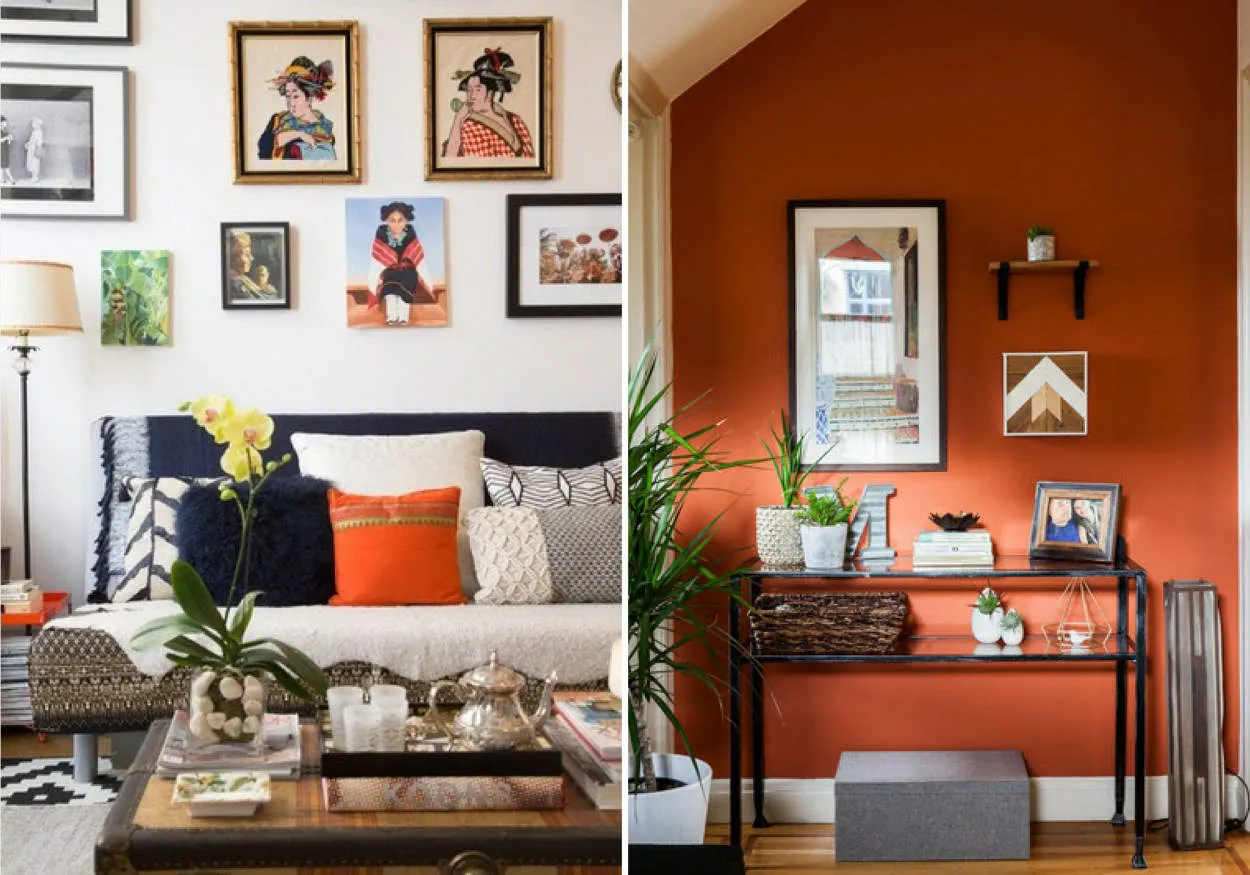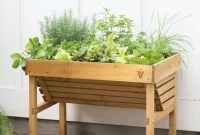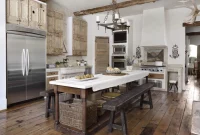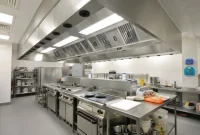Eclectic Home Decor: Mixing Styles with Ease
Defining Eclectic Style
Eclectic style in home decor refers to the art of combining different design elements, patterns, textures, and eras to create a unique and visually appealing space. This style embraces the notion that there are no strict rules when it comes to decorating, allowing individuals to showcase their personal taste and creativity.
Eclectic home decor is all about mixing and matching different styles with ease. It is about harmoniously blending vintage and modern pieces, incorporating various colors and patterns, and creating unexpected combinations that reflect your individuality.
When embracing eclectic style, one often finds a fusion of traditional, contemporary, industrial, bohemian, and even cultural influences. This mixing of styles creates an interesting and dynamic environment that tells a story and sparks conversation.
One key aspect of eclectic style is the ability to balance contrasting elements. Combining old and new, smooth and textured, bold and subtle, creates a visually stimulating space that captures attention and invites exploration.
Furthermore, eclectic style allows for a personalized approach to decorating. It encourages the use of sentimental and treasured items as well as incorporating elements from different parts of the world. This style embraces the idea that our homes should be a reflection of our journeys and experiences.
Ultimately, eclectic style lends itself to individual expression and creativity. It offers the freedom to curate a space that is unique and personal, utilizing an array of materials, colors, and design periods to create a visually memorable home.
Selecting Diverse Furniture
When it comes to eclectic home decor and mixing styles with ease, selecting diverse furniture is key. The furniture you choose plays a vital role in creating a cohesive yet unique look for your space.
Start by considering the overall theme or mood you want to achieve. Do you prefer a modern, rustic, or vintage style? Once you have a clear vision, you can begin selecting furniture pieces that reflect your desired aesthetic.
One approach is to mix different furniture styles together. For example, pair a sleek, contemporary sofa with a vintage coffee table. This combination can create an interesting and visually appealing contrast in your living room.
Another option is to focus on incorporating diverse materials and textures. Look for furniture made from different materials such as wood, metal, glass, or even acrylic. Mixing textures like leather, velvet, or woven pieces can add depth and visual interest to your space.
Additionally, don’t be afraid to mix and match colors. While a neutral color palette can provide a cohesive base, adding pops of color can bring energy and personality to your decor. Consider incorporating colorful accent chairs, throw pillows, or even a statement piece of furniture in a bold hue.
Remember to balance the scale and proportion of your furniture pieces. Mixing large and small items can create a dynamic and visually pleasing arrangement. Be mindful of the layout and ensure that the furniture fits well in the available space.
Lastly, keep in mind that eclectic decor is all about personal expression. Don’t be afraid to showcase your unique style and personality through your furniture choices. Trust your instincts and have fun experimenting with different combinations until you find the perfect mix for your home.
Cohesive Color Schemes
In the world of eclectic home decor, one of the key elements to consider is cohesive color schemes. Mixing styles can be a bold and exciting endeavor, but ensuring that the colors used throughout your space complement each other is essential for creating a harmonious and visually appealing result.
When combining different styles, it’s important to have a cohesive color palette that ties everything together. This can be achieved through careful selection of complementary or analogous colors. Complementary colors are those that are opposite each other on the color wheel and create a vibrant contrast. On the other hand, analogous colors are located next to each other on the color wheel and offer a more harmonious and subtle combination.
Another approach to achieve a cohesive color scheme is by using varying shades and tones of the same color. This monochromatic approach creates depth and visual interest while maintaining a cohesive look. By using different textures and patterns within the same color palette, you can also add dimension and excitement to your eclectic decor.
Consider the mood and atmosphere you want to create in each space. Cool colors like blues and greens evoke a sense of calm and tranquility, while warm colors like reds and oranges bring energy and vibrancy. By carefully choosing the colors that align with your desired ambiance, you can enhance the overall aesthetic of your eclectic home.
Don’t be afraid to experiment and play with colors in your eclectic home decor. Mixing different styles and patterns can be a fun and creative way to express your personal taste. Just remember to keep an eye on creating a cohesive color scheme that ties everything together for a visually stunning result.
Mixing Patterns and Textures
When it comes to home decor, incorporating various patterns and textures can add depth and personality to any space. Mixing different styles harmoniously is a key aspect of eclectic design. By combining contrasting patterns and textures, you can create a visually appealing and dynamic atmosphere in your home.
1. Start with a Neutral Base
A neutral color palette serves as the perfect canvas for mixing patterns and textures. Choose a neutral shade for your walls, floors, and larger furniture pieces. This will create a cohesive backdrop that allows your patterns and textures to stand out and complement each other.
2. Play with Scale
Experiment with patterns and textures of varying scales to create visual interest. Pair smaller, intricate patterns with larger, bolder ones to achieve balance. Mixing different textures, such as smooth velvet with rough burlap or shiny metallics with natural wood, adds tactile appeal to your space.
3. Stick to a Color Scheme
Having a cohesive color scheme is important when mixing patterns and textures. Select a few key colors and use them consistently throughout your decor. This will tie everything together and prevent your space from looking chaotic. You can also incorporate a pop of contrasting color to add excitement and intrigue.
4. Layer Patterns Strategically
Avoid overwhelming your space by strategically layering patterns. Choose one or two main patterns as the focal point, such as a bold floral print on an accent wall or vibrant geometric pillows on a neutral sofa. Then, add smaller patterns through decorative accessories like curtains, rugs, or artwork.
5. Embrace Texture in Different Materials
Textures can be introduced through a variety of materials, such as fabric, wood, metal, or even plants. Incorporating a mix of these materials adds depth and visual appeal. Consider adding textured elements like a chunky knit throw, a rattan chair, or a hammered metal coffee table.
By following these tips, you can confidently mix patterns and textures in your home decor. Don’t be afraid to get creative and experiment with different combinations. The key is to achieve a balanced and harmonious look that reflects your personal style.
Balancing Different Design Elements
When it comes to eclectic home decor, the key is to find a harmonious balance among different design elements. Mixing various styles can create a unique and visually appealing space. Here are some tips to help you achieve a well-balanced eclectic home:
1. Start with a cohesive color palette
Choose a color scheme that ties all the different design elements together. This will create a sense of unity and cohesiveness in the space.
2. Mix patterns and textures
Experiment with different patterns and textures to add depth and visual interest to your home. However, make sure to choose patterns and textures that complement each other to avoid a chaotic look.
3. Combine old and new
Integrate vintage or antique pieces with modern furniture to add character and a sense of history to your space. The juxtaposition of old and new can create a visually striking effect.
4. Pay attention to scale
Make sure that the scale of your furniture and decor items is proportionate to the size of the room. Balancing scale will help create a visually pleasing arrangement.
5. Don’t be afraid to mix different styles
Embrace the freedom of eclectic design by incorporating elements from different styles such as bohemian, contemporary, traditional, or industrial. The key is to find a common thread that ties them all together.
6. Create focal points
Highlight key areas or pieces in your home by creating focal points. This can be done through the use of bold colors, unique furniture pieces, or eye-catching artwork.
7. Edit and simplify
While it’s great to mix different design elements, it’s essential to avoid overcrowding the space. Edit and simplify your decor to maintain a sense of balance and prevent visual clutter.
Conclusion
Embracing eclectic home decor allows homeowners to blend different styles effortlessly, creating a unique and personalized space. By combining contrasting elements, such as vintage and modern pieces or incorporating various cultural influences, one can achieve a visually interesting and harmonious ambiance. The key lies in balancing the different styles and ensuring they complement each other. Ultimately, eclectic home decor provides an opportunity for self-expression, making any living space truly one-of-a-kind.




